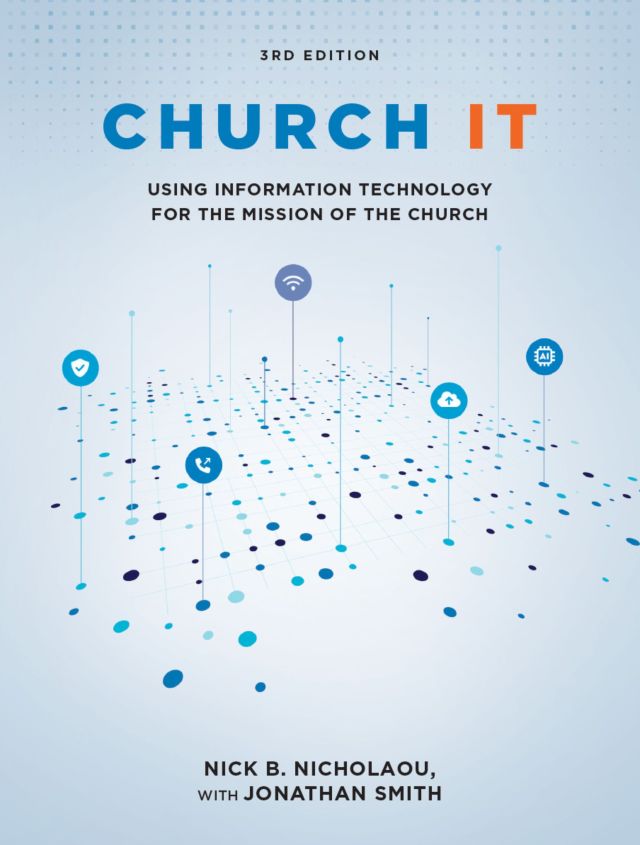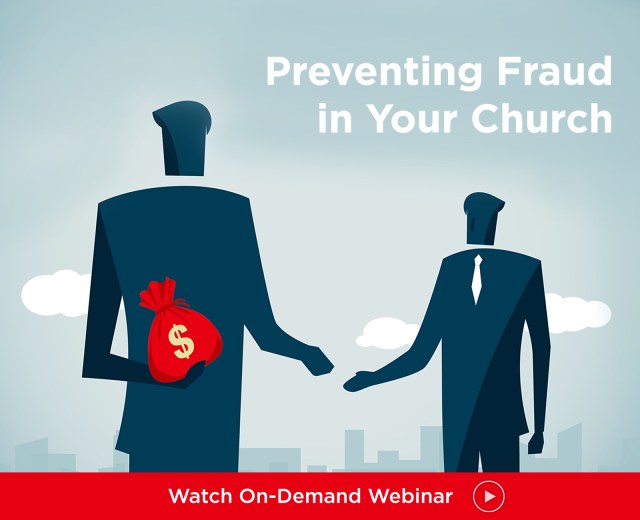Editor’s Note: This article is part of the exclusive Advantage Membership content offered each month. Learn more on how to become an Advantage Member or upgrade your membership.
COVID-19, more commonly known as the coronavirus, continues spreading globally. Extensive media coverage, combined with daily warnings from health officials about the growing threat the virus poses, have prompted questions about how people should approach their work, travel, social gatherings, and public activities.
Many of those same questions have extended to churches, and the preparations and precautions church leaders should take with respect to worship services, events, and office work.
With an eye toward helping church leaders address challenges associated with an outbreak, Church Law & Tax assembled this article outlining eight key responses they should note to make informed ministry decisions.
1. Identify a point person and form a response team now.
Assign a staff leader or trusted volunteer to take the lead with gathering information and tracking updates about the outbreak. The following sources and resources will prove especially valuable with familiarizing this person about the illness, its spread, and tactics for responding:
- The US Centers for Disease Control and Prevention’s (CDC) coronavirus page;
- The CDC’s page for community and faith-based organizations dealing with pandemic flu situations; and
- The CDC’s main page regarding influenza and its page regarding influenza pandemics.
This point person can lead internal communications as well as communications with key local agencies and health care providers should an outbreak occur in your community. Ideally, this person should be someone who is highly trusted within your church and demonstrates strong written and verbal communications skills.
Your point person also can lead your church’s response team. We previously recommended involving the following on the team: a member of the pastoral staff; a local health care professional; a custodian or building maintenance team member; a finance committee member; and a communications/website team member. This team should form now and meet soon to first assess the current situation and developing local trends and then set up preventive measures and potential response plans.
2. Encourage personal hygiene among staff, volunteers, and congregants.
The CDC says the spread of COVID-19 appears to occur when an infected person coughs or sneezes within six feet of another person. Promote personal hygiene, especially through posters and flyers around the church building reminding staff members, volunteers, and congregants to wash their hands, practice good etiquette with coughing and sneezing, and evaluate when it’s best to stay home. Hand-washing guidance, in particular, should explain the importance of using hot water and soap, and the ideal duration (conventional wisdom suggests the time it takes to sing “Happy Birthday” twice).
For more help with communicating tips and best practices, check out these online resources:
- Downloadable poster for handwashing and cough/sneeze etiquette;
- Online poster to encourage staff and congregants to stay home when ill;
- Quick tips for identifying symptoms; and
- Flyer for preventing the spread of flu.
Along with this communications plan, the CDC recommends:
- Making hand sanitizer stations and tissues available throughout the church building; and
- Regularly refilling cleaning supplies, toilet paper, tissues, hand soap, hand sanitizer, and disposable gloves for cleaning crews, just to ensure nothing runs out during or after services and events.
3. Maintain continuous cleaning and sanitation practices.
The CDC says it is possible for a person to touch a surface containing COVID-19 and contract it by subsequently touching his or her mouth, nose, or eyes. The CDC consequently recommends routine cleaning of frequently touched surfaces.
In church offices, this includes workstations, countertops, and doorknobs. In church buildings, this includes restrooms, nurseries or daycares, and common areas. During previous viral outbreaks, we recommended churches implement nursery policies preventing toys passing from child to child and cleaning toys after each use.
We also previously recommended hiring additional cleaning help after worship services and events to ensure restrooms and common areas are thoroughly disinfected. The CDC says regular cleaning solutions and sanitizers are sufficient until further notice.
The CDC also encourages the use of no-touch trash cans throughout offices and buildings.
4. Revisit policies on staff sick leave, absences, and remote work arrangements.
The CDC advises employers to impose temporary mandatory sick-leave policies that do not penalize staff members who have COVID-19. The center also suggests employers temporarily allow extended absences without a note from a medical professional since local health care providers may become inundated with appointments.
Additionally, the CDC says employers should anticipate increased absences as employees provide home care for ill family members. Flexible leave policies are likely necessary—and employers should encourage these employees to follow the CDC’s recommended precautions if exposed to COVID-19 while providing care.
Relatedly, churches should have measures in place to send someone home immediately if they show signs of illness at work. Note the need to keep a potentially ill person separated as much as possible from other individuals.
In terms of allowing employees back to work (either after illness or exposure), employers should require individuals to be symptom-free before returning to work. This includes an orally taken temperature of less than 100.4 degrees for at least 24 hours (without the use of fever-reducing medication), and preferably includes completing a CDC self-assessment and consulting with a local physician.
Last, one CDC official encourages organizations and employers to begin making preparations now for “social distancing,” which includes remote-work arrangements. Now is the time to evaluate whether the church’s information technology and other infrastructure (such as laptops, virtual private networks, and antivirus and malware protections) will make such arrangements for staff possible.
5. Keep employment law considerations in mind.
Medical and legal experts remind employers like churches to be cautious regarding how they maintain workplaces, track records, and keep confidences. Of note:
- The CDC reminds employers not to evaluate an employee’s potential risk of infection based solely on his or her race or country of origin;
- The CDC reminds employers to maintain confidentiality as much as possible regarding any employee diagnosed with COVID-19 or suspected to have it;
- The Occupational Safety and Health Administration’s (OSHA) requirement for employers to provide “employment and a place of employment, which are free from recognized hazards that are causing or are likely to cause death or serious physical harm.” This means continuous cleaning and sanitation practices are crucial.
- OSHA deems COVID-19 to be a required reporting event if an employee becomes ill on the job (most churches must);
- State labor safety laws must be followed;
- The federal Fair Labor Standards Act (FLSA) wage-and-hour provisions must be followed, particularly for hourly employees and certain salaried employees who are eligible for overtime pay. Also, the FLSA says volunteers can offer their services without pay during an emergency to a private, religious not-for-profit—but “employees of such organizations may not volunteer to perform on an uncompensated basis the same services they are employed to perform”; and
- The implications of the Americans with Disabilities Act of 1990 (ADA) on remote work arrangements, according to the Equal Employment Opportunity Commission (EEOC).
6. Consider limiting travel, especially outside of the country.
Sending staff members, volunteers, or congregants to conferences or short-term missions trips in the immediate future should be handled with caution. Check the CDC’s geographic risk assessment for global updates.
If churches still opt to send staff members or volunteers out of the country, the CDC strongly urges lining up medical care or assistance ahead of time in the event someone becomes ill during the trip. Some of the major church insurers offer additional coverage that assists with securing foreign medical care during out-of-country trips. Leaders should check with their insurance agents about the features and costs of this coverage before any trips.
Relatedly, global law firm DLA Piper cautions employers not to force an employee to travel if the employee expresses concerns about the destination involved (particularly ones with a CDC-issued threat level). Doing so could create legal liability if the employee later becomes ill with COVID-19, the firm says.
7. Consider alternatives with food-related activities.
For communion, consider using individual glasses and bread pieces. For church events involving food, consider offering only individually packaged food and drink items. If food and drinks (such as punch bowls) are set out, advise people to take what they touch and don’t leave items out for extended periods of time. Make sure garbage is thrown out as soon as possible.
8. Should conditions warrant, cancel church services and close the church office.
Should your local or state health officials or a federal agency warn against public gatherings or advise congregations (or your congregation specifically) not to meet, take such warnings and advice seriously. Follow the guidelines and instructions provided. Your church can demonstrate its care to the larger community by playing its part.
Free Resource. Christianity Today and Church Law & Tax created a free, downloadable PDF guide that covers the theological and ministerial considerations churches should make in response to outbreak conditions.
Should your church opt to cancel services, you can still bring your congregation together through online services. But note your church should only stream your pastor’s teaching and announcements unless it already possesses proper licenses to broadcast copyrighted music.
Additionally, remind your church of the importance to still faithfully give, even when the church hasn’t physically gathered. Bills are still due and payroll still needs to be made. Previously established electronic giving arrangements through websites, texts, and electronic funds transfer (EFT), as well as mobile giving apps, will naturally help most giving to still occur. But friendly messages can help remind those congregants who don’t use e-giving.
Lastly, if you have to close the church office for a period of time, think ahead about what steps need to be taken to make sure bills and payroll get paid and other mission-critical business activities are maintained.
Additional Reading
For more on how people of faith should respond to the coronavirus, see the following articles on ChristianityToday.com:





